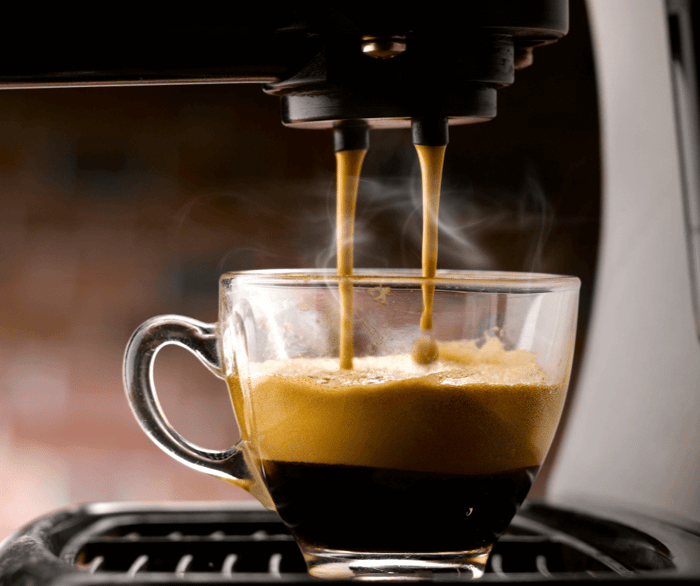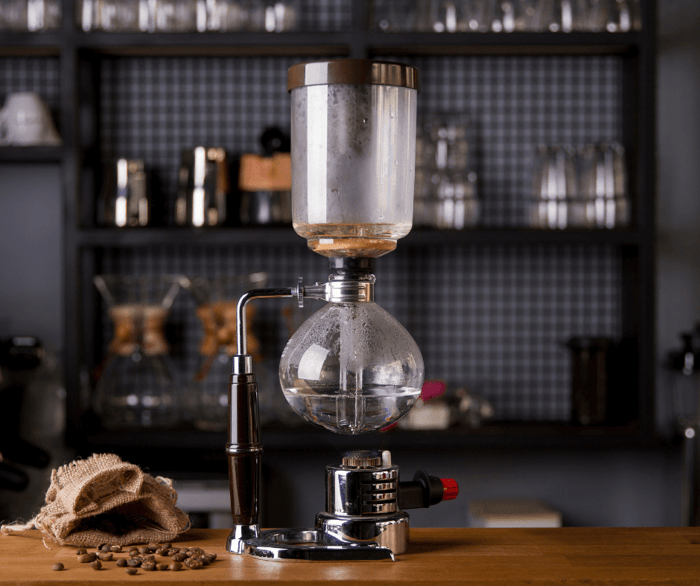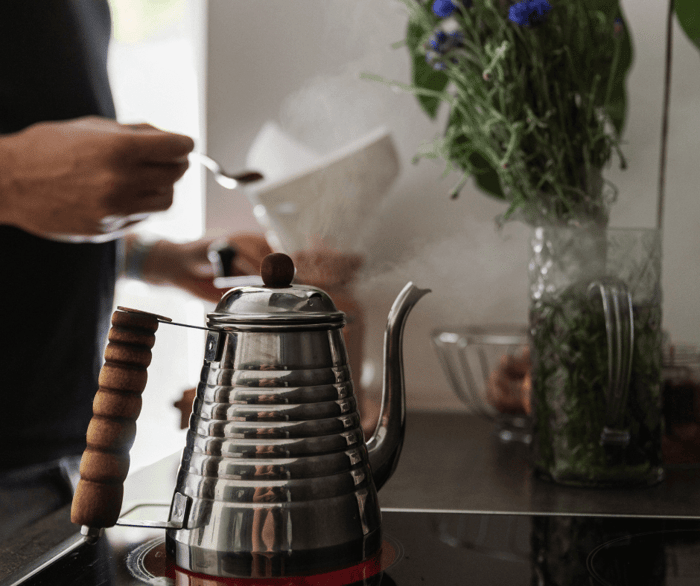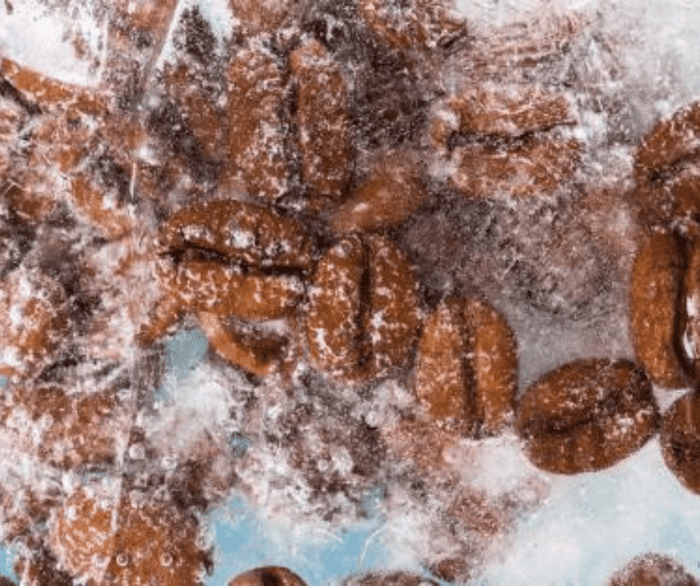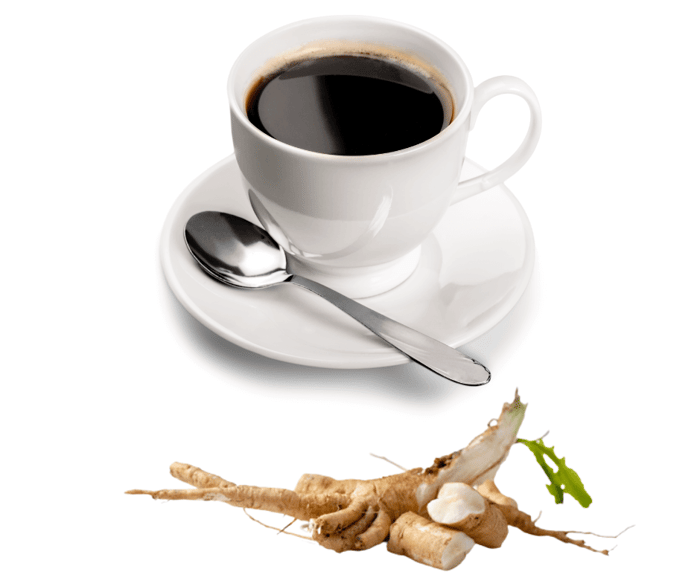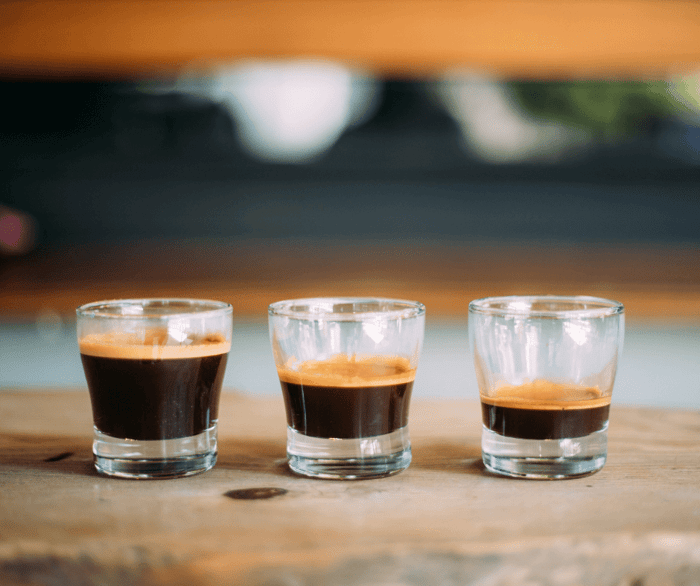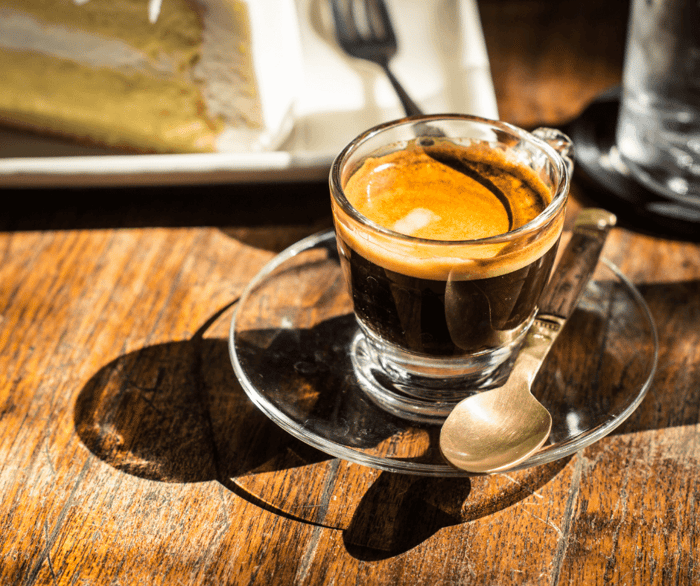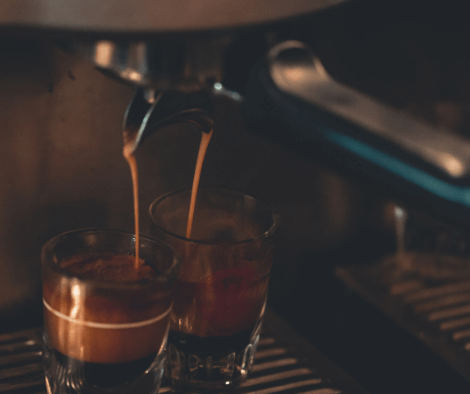“Crema” is one of those coffee terms that coffee aficionados and baristas toss around a lot—If you’ve spent a lot of time at coffee shops, you’ve actually seen it plenty of times. But what is it?
(Besides the word my phone always auto-corrects to “cream.”)
Quite simply, crema is the fine layer of tan foam or froth at the top of an espresso.
Or perhaps it’d be more accurate to say: at the top of a good espresso.
It’s created during the extraction process in an espresso machine, when the solubles in the coffee beans begin to dissolve while they’re immersed in hot, pressurized water.
Visually, it’s similar to the head of foam at the top of a beer. And it’s actually made of essentially the same stuff—CO2.
After coffee beans have been roasted, they begin to slowly release carbon dioxide. Most of it dissipates in the air before the beans are grinded, but the CO2 that remains in the beans gets shaken loose during grinding.
When the ground coffee gets hit with the pressurized hot water of an espresso machine, the carbon dioxide turns into lots and lots of very small bubbles. These tiny bubbles are what make up the crema.
But as with all things in the coffee world, the simple presence of crema atop a shot doesn’t necessarily mean it’s “good” espresso.
Good crema has a consistent coloring that’s not too dark or too light, and a smooth, velvety texture. Robusta beans tend to create a visually superior crema compared to Arabica beans.
Using fresher coffee beans will also produce a stronger crema.
Naturally, darker roasts tend to produce less crema due to containing less oils and gases. You might think you’d want to try a very light roast to make more crema—but don’t do it. This is one of the reasons coffee roasters sometimes make specific “espresso” roasts.
You’ve probably seen espresso crema with a large bubbles in it before.
Technically, that’s considered a negative characteristic; really great crema is supposed to be consistent throughout. In a perfect shot, it should be a foam made up of only tiny bubbles—no large ones sticking out.
That said, it’s not the end of the world—just something you generally try to avoid if you’re trying to pull “perfect” espresso shots.
However, crema should contain no “grit.” If you see coffee grit floating in the crema at all, that’s a big no-no.
Ideally, crema should also last a couple minutes before it disappears. If the foam is too bubbly, it can dissipate before anyone has time to appreciate it!
All that said—focusing only on making a beautiful layer of crema is a little bit like the tail wagging the dog.
That is, if you just focus on pulling a great shot of espresso, you should naturally end up with a visually pleasing layer of crema.
If you’re attempting to pull a shot the other way around, focusing on just the crema, you can end up with crema that looks okay, but it’ll be floating on top of a subpar tasting shot of espresso.
As I mentioned, to pull a perfect espresso shot with a great head of crema, you want to use an espresso roast. Here are a couple of the excellent espresso roasts we have available for sale here at Meadow Ridge Coffee:
- Cafe Bustelo Cuban Espresso Roast - One of the most popular Cuban inspired coffee brands. Rich, bold and smooth all in one can.
- Meadow Ridge Italian Espresso (5 lb Bag) - A superb gourmet espresso roast full bodied with unique flavor, perfect for making authentic Italian espresso. Large size is great for coffee shops, bakeries, cafes, and coffee hospitality stations.
Don’t have an espresso machine? Try the AeroPress Coffee and Espresso maker.
Want More Coffee Content?
- Daily Coffee Grind - Click Here
- Coffee Reviews - Click Here
- Coffee Brewing Guides - Click Here
- Coffee Brewer Reviews - Click Here

